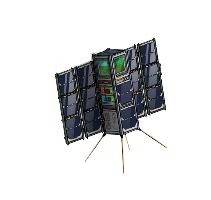| Satellite | BioSat |
|---|---|
| Form factor | CubeSat |
| Units or mass | 3U |
| Status | not launched, expected in 2027 |
| Launcher | not launched |
| Organization | Norwegian University of Science and Technology (NTNU) |
| Institution | University |
| Entity type | Academic / Education |
| Headquarters | Norway |
| Oneliner | |
| Description | |
| Notes |
Orbit NTNU is a volunteer student organization educating tomorrow's space engineers. |
| Sources | [1] [2] [3] [4] |
| Photo sources | [1] |
Last modified: 2024-12-19

